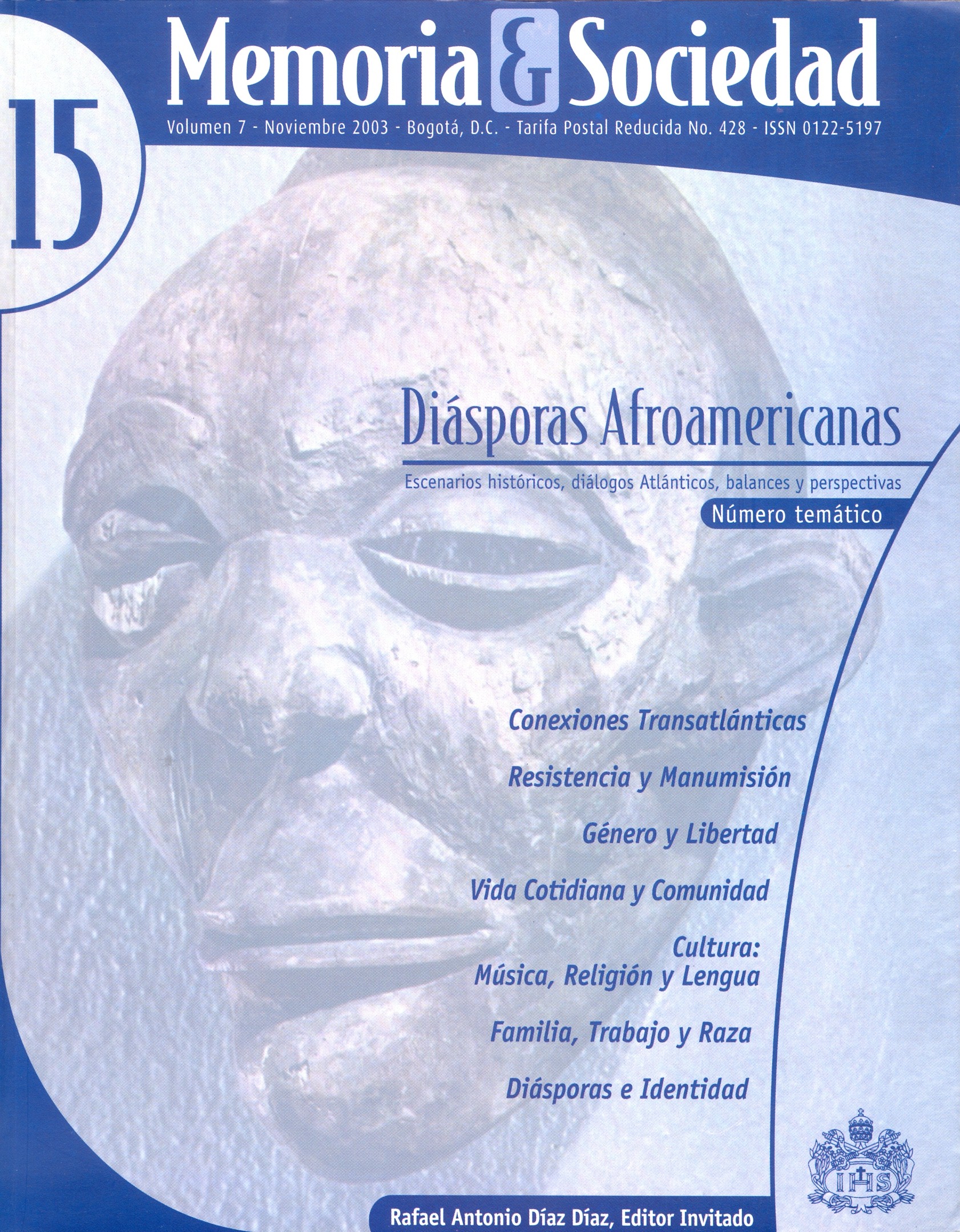Abstract
The situation of the black woman within the colonial slave society, in the case of the interior region of the kingdom of New Granada, is defined within a model of subordination based on such aspects as gender, race and socioeconomic conditions. However, contrary to the ideas that have been disseminated, the interpretation of 140 dispatches recuperated from the Historic Archive show that before this situation of subordination, black women used different forms o f resistance, some consensual and others disputed, which allow us to conclude that black women elaborated an autonomous identity, different from that imposed by the regime and through which they reconstructed their ethnic identity of the group, allowing for the growth of groups of rivals, the formation of familial structures which were different from the Iberian model, and collective organizations which served to destabilize the hierarchical social order.The journal Memoria y Sociedad is registered under a Creative Commons Attribution 4.0 International Public License. Thus, this work may be reproduced, distributed, and publicly shared in digital format, as long as the names of the authors and Pontificia Universidad Javeriana are acknowledged. Others are allowed to quote, adapt, transform, auto-archive, republish, and create based on this material, for any purpose (even commercial ones), provided the authorship is duly acknowledged, a link to the original work is provided, and it is specified if changes have been made. Pontificia Universidad Javeriana does not hold the rights of published works and the authors are solely responsible for the contents of their works; they keep the moral, intellectual, privacy, and publicity rights.
Approving the intervention of the work (review, copy-editing, translation, layout) and the following outreach, are granted through an use license and not through an assignment of rights. This means the journal and Pontificia Universidad Javeriana cannot be held responsible for any ethical malpractice by the authors. As a consequence of the protection granted by the use license, the journal is not required to publish recantations or modify information already published, unless the errata stems from the editorial management process. Publishing contents in this journal does not generate royalties for contributors.

